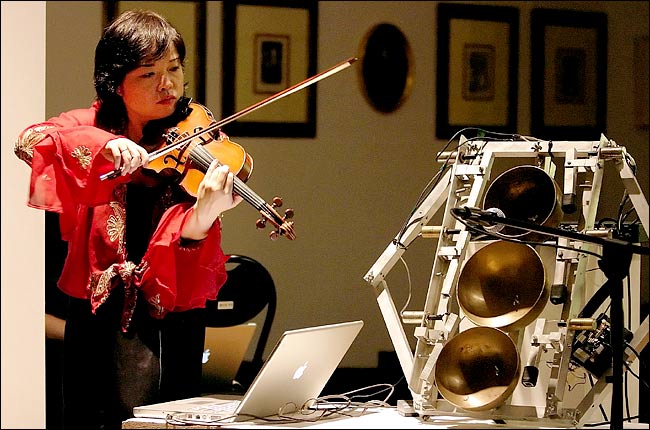Latest Posts
-
Final Project
-
Final Project Progress Report
We have implemented image partitioning and convert the average RGB values from these partitions into HSL values. Our intention is to create a more complex algorithm for generating music, but we are still experimenting with a variety of small ideas that were troublesome to embed into the interface. In order to have something to demo, we are currently iterating through the partitions from left to right and top to bottom and playing notes defined by the properties of each box. The hue is used to determine the pitch chosen from a C major scale, the saturation is used to determine the loudness of the note, and the luminosity controls the articulation (attack speed). While we spent a brief amount of time investigating image segmentation, we found that while neural networks could provide benefit in a semantic form, it is more relevant at this stage for us to focus on more abstract image interpretation. Therefore, we have implemented k-means clustering as a means of extracting the most prominent colors from an image. It currently isn’t being used in our demo audio, but we are considering how it could impact the tonality of the piece. We plan to focus our efforts from now on on image contour analysis and completing the algorithmic composition component.
-
Mari Kimura

Image source: Jennifer Taylor for The New York Times
Mari Kimura playing "Pluck-Ring" with TibetBot, a robot designed to emulate Tibetan singing bowls used by Buddhist monks during meditation -
Random Sounds
Max patch that plays three randomly-generated voices on the piano. Probabilities are based off of common chord progressions and proximity to previously played note.
-
Midi Sounds
Max patch that plays synthesized sounds based on Midi data from expressionPad on iPhone. There are 4 types of sounds that can be selected by changing Midi channels. Also supports pitch bending and modulation.
-
Javascript Music
To play this virtual instrument, use the number row of your keyboard. The "1" key represents the lowest pitch (defaults to middle c) and the "+" key represents the highest pitch. Each key is separated from its left and right neighbors by a semitone. You can shift the register by an octave using your up and down arrow keys. Also feel free to play around with the oscillation type and gain level below. The code for the oscilloscope and spectroscope was taken from Professor Dobrian's WebAudio Example 2.
-
Typing A Melody
Max patch that plays a short melody as the name “Richard Chong” is typed slowly.